-
CATEGORY ::
- All Seeds /
- All Ornamental Grass Seeds
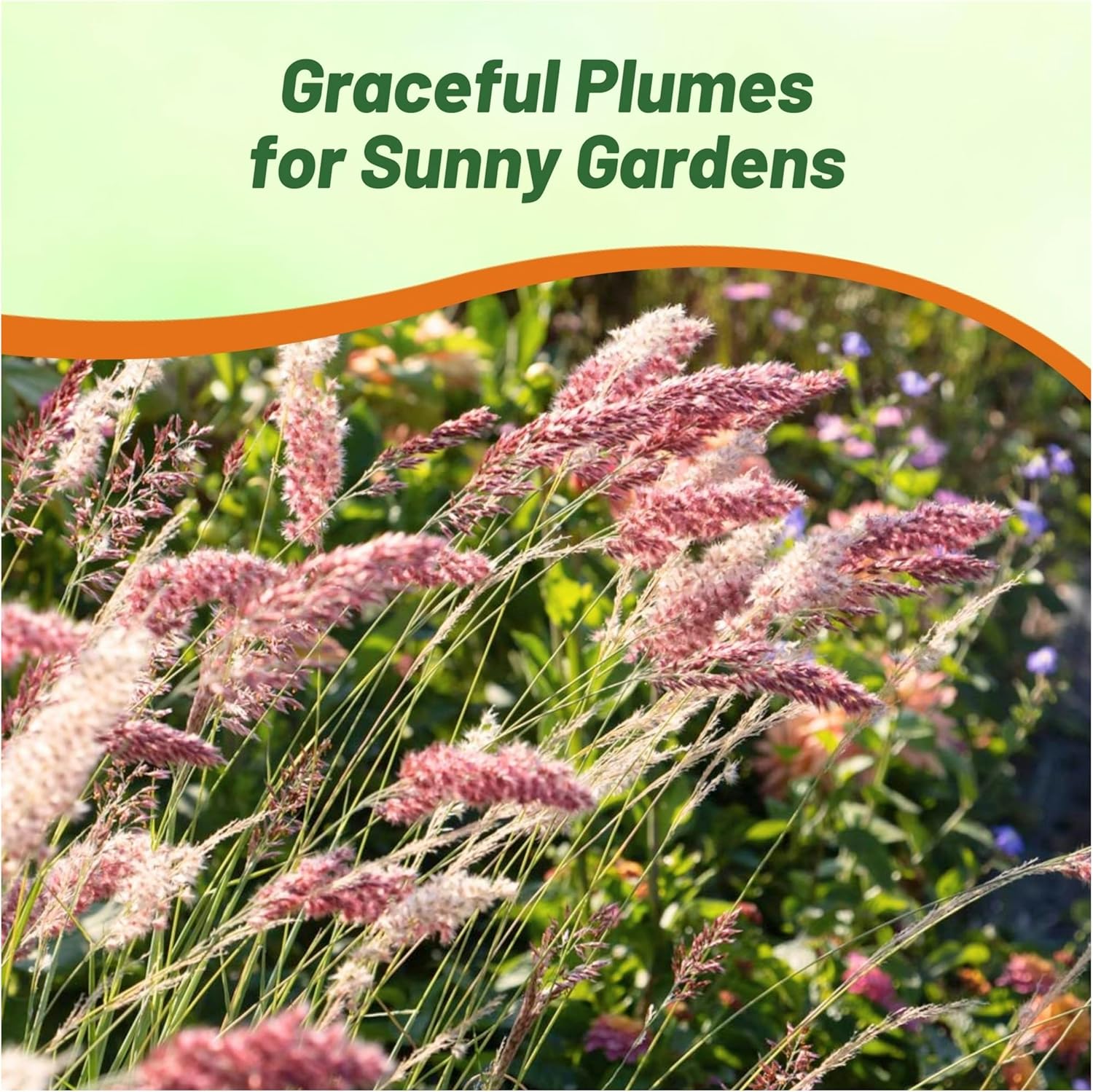

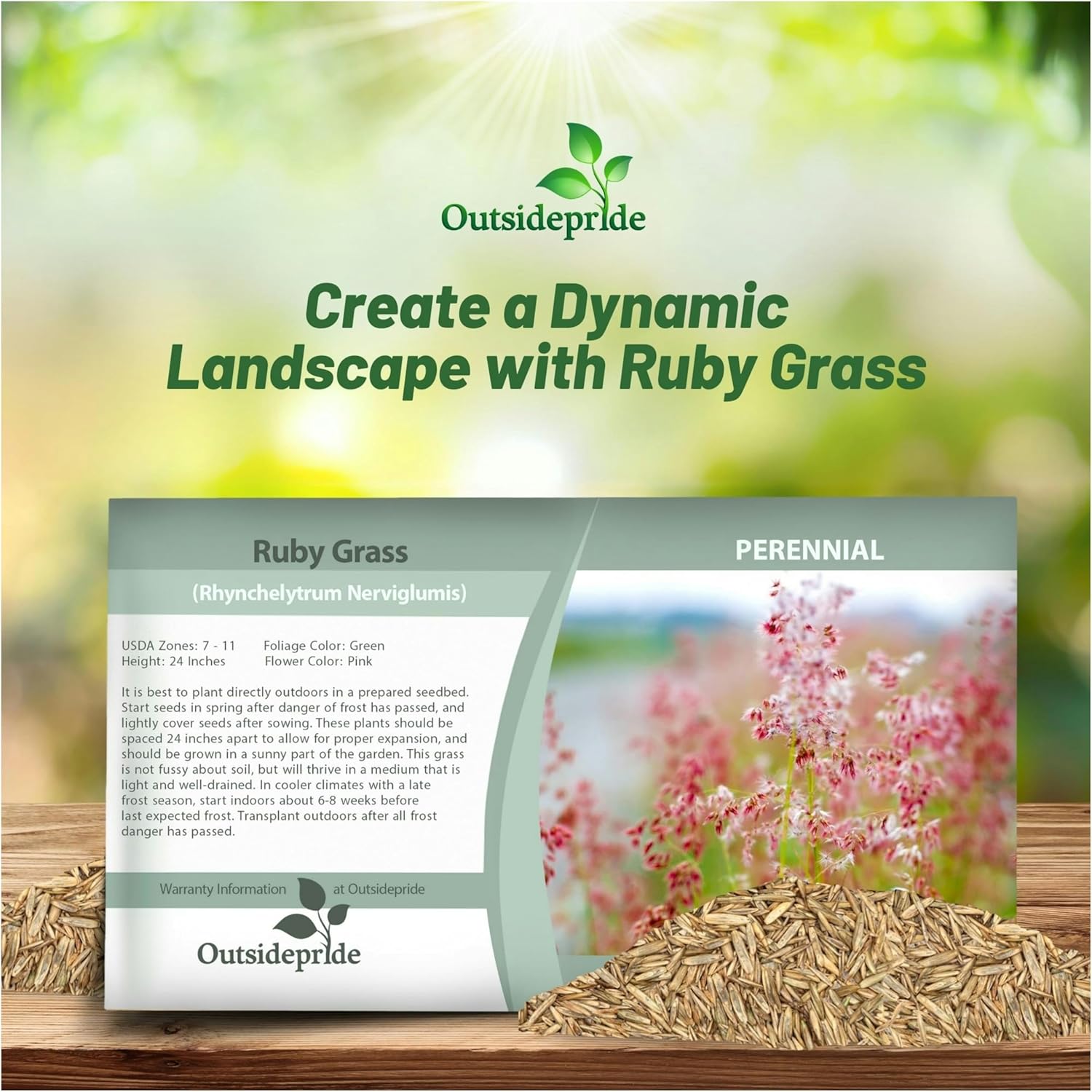
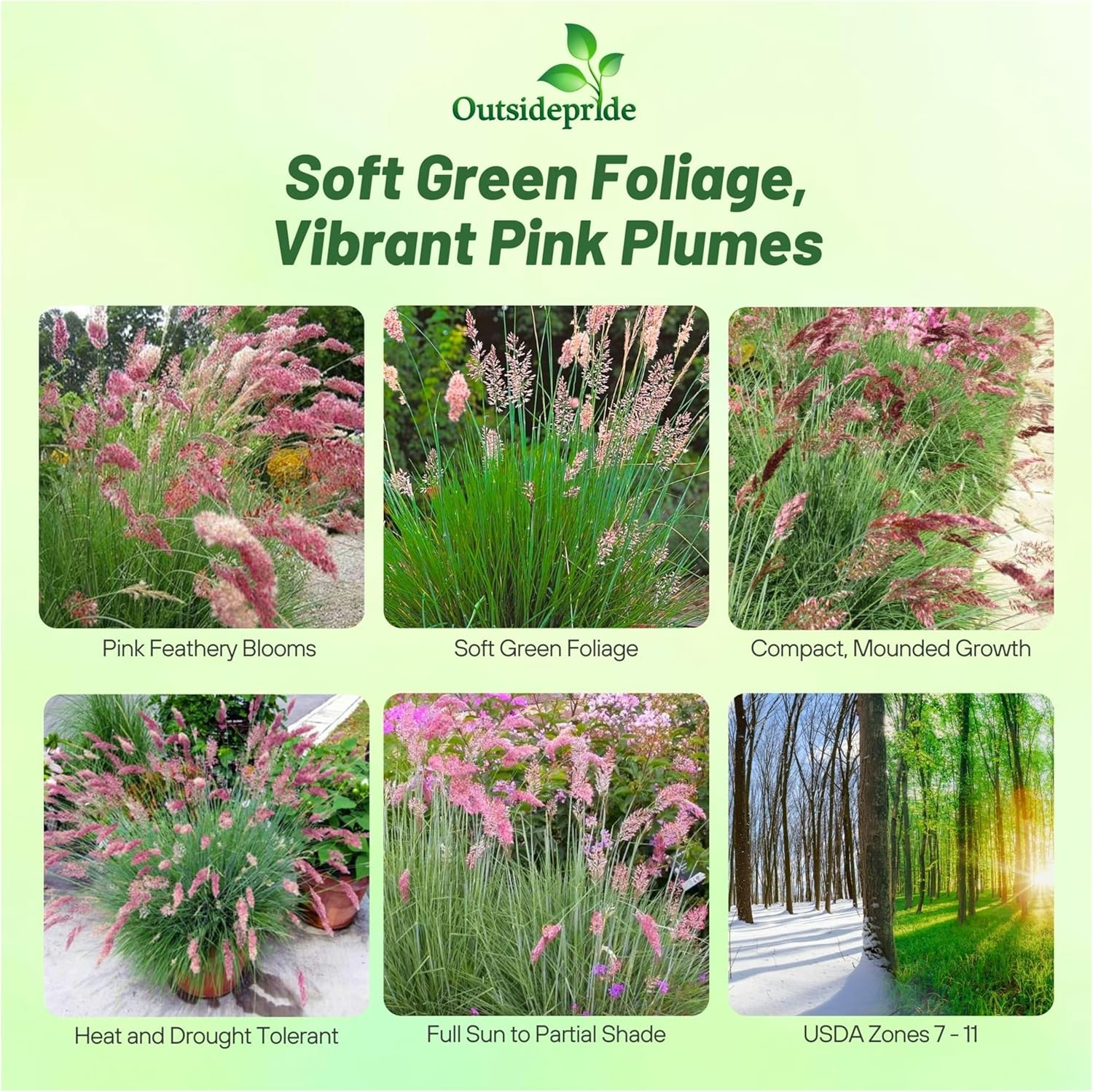
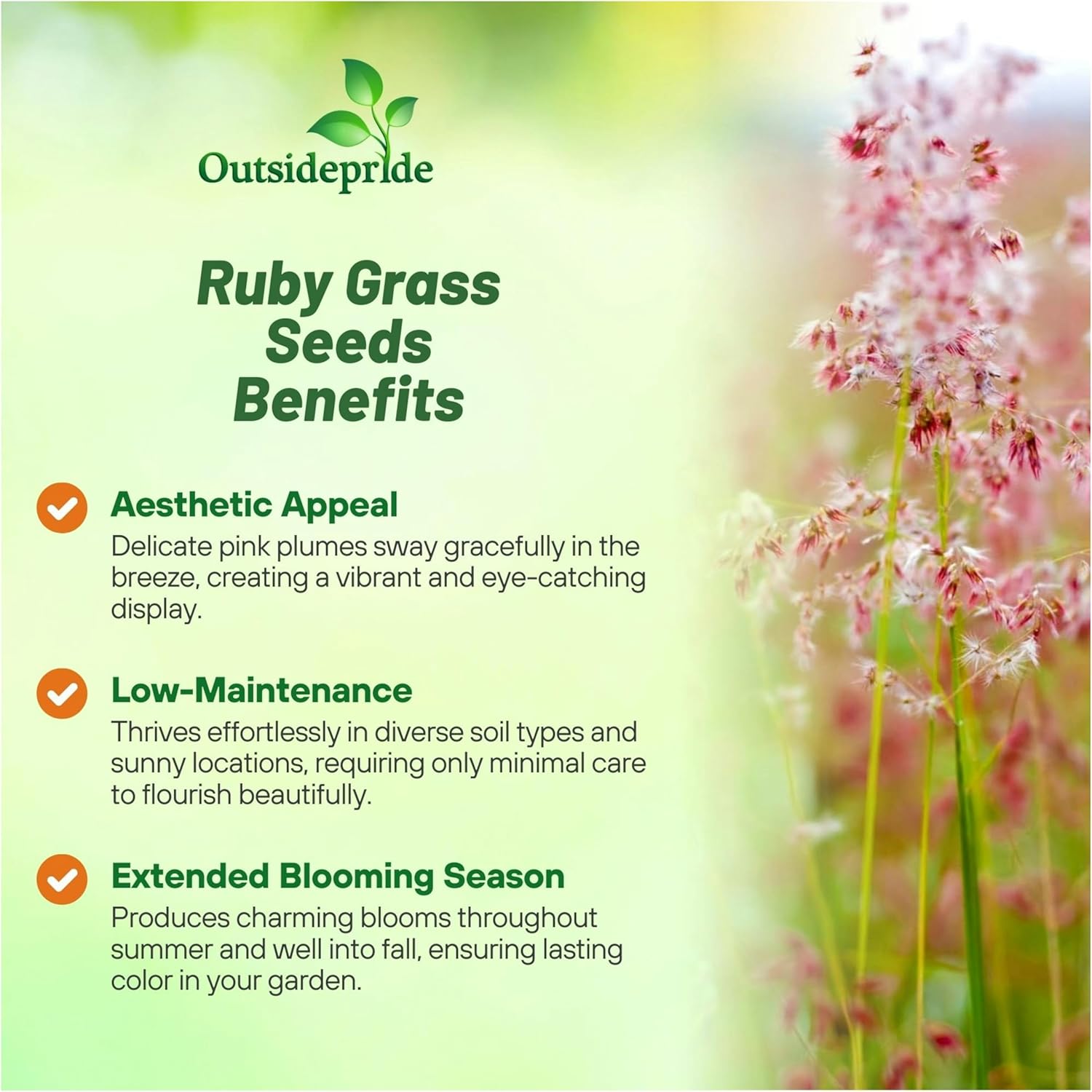
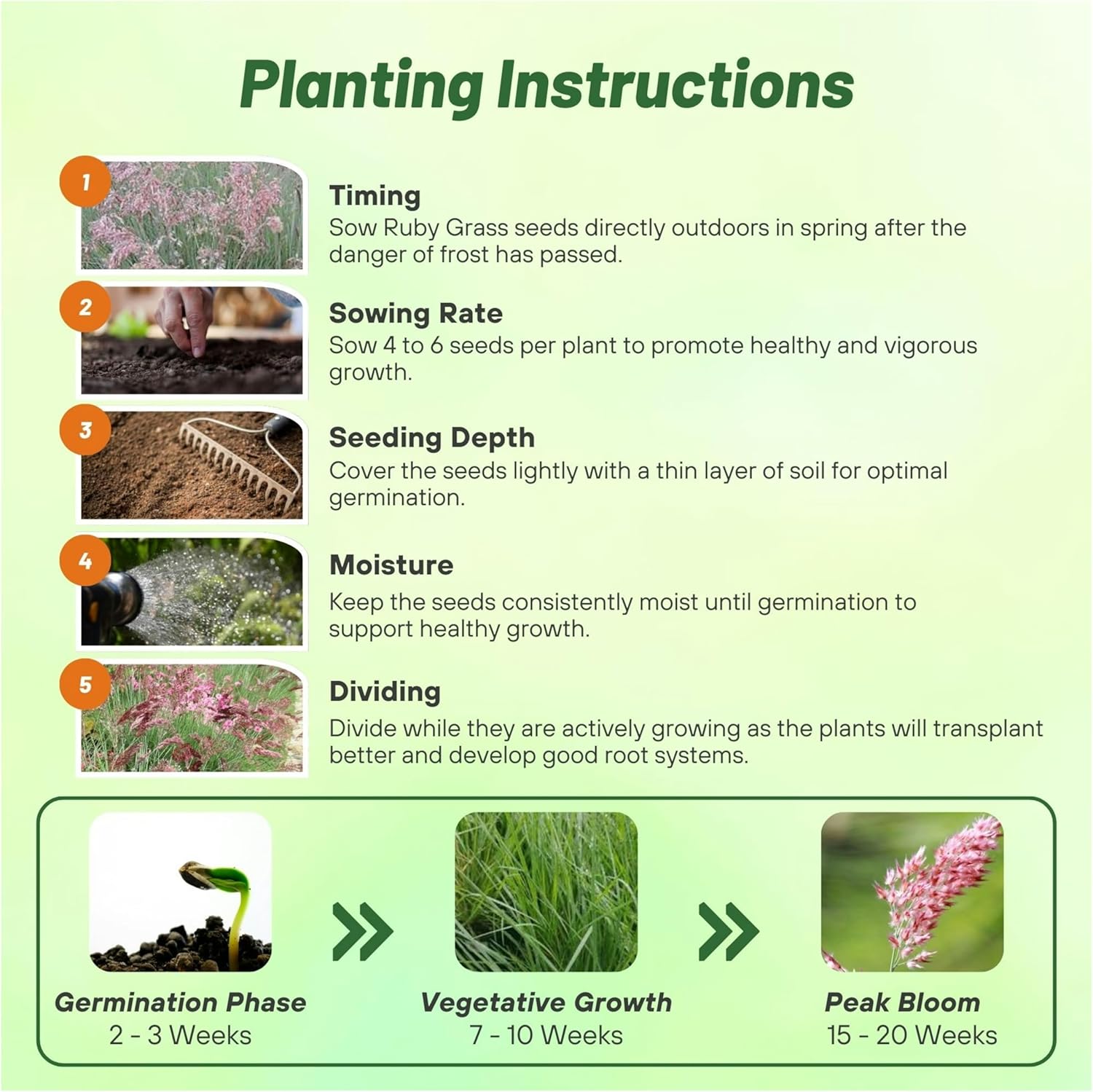
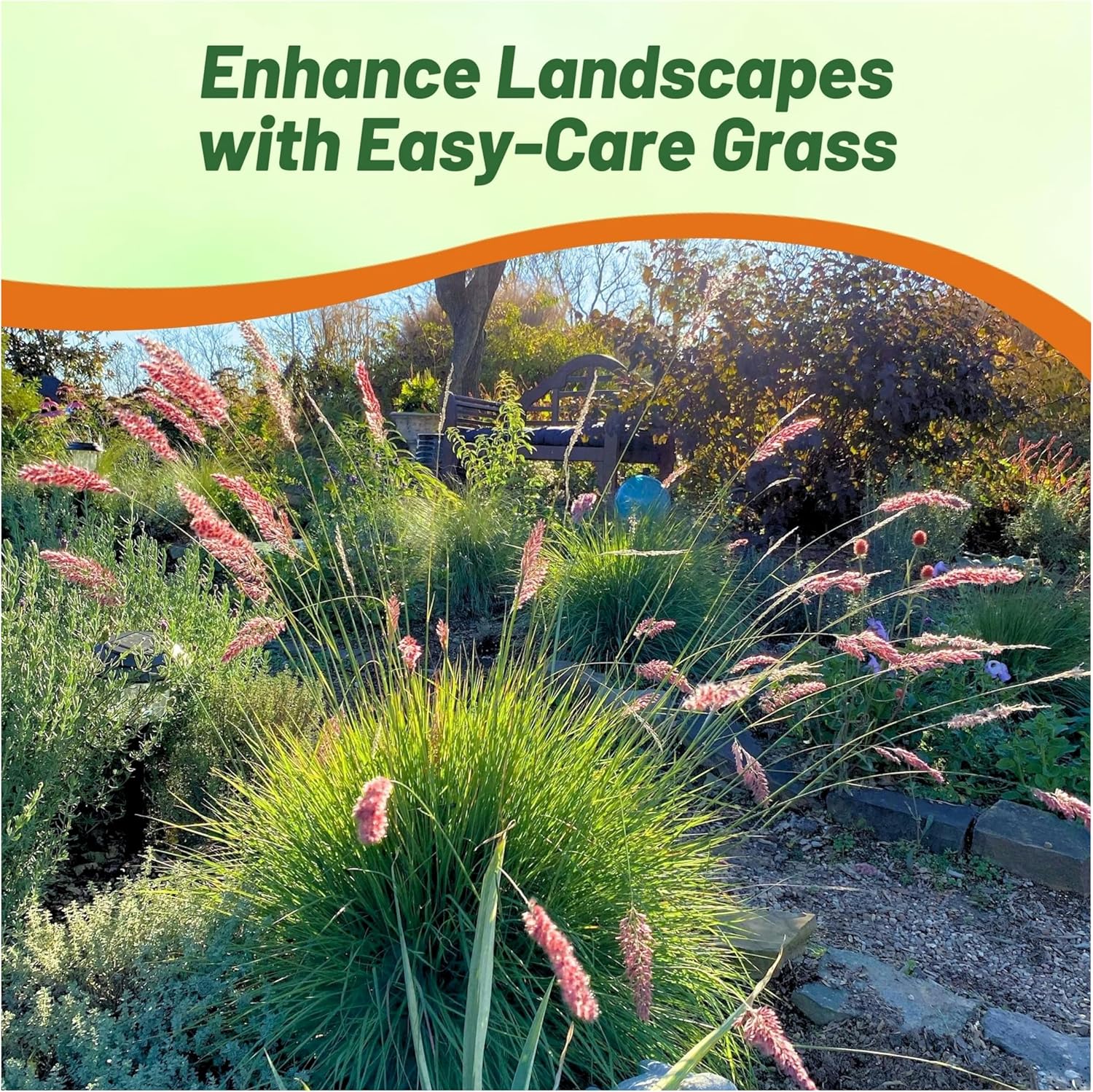

Ruby Grass Seeds
SEASON
Perennial
USDA ZONES
7 - 11
HEIGHT
24 inches
WIDTH
24 inches
FOLIAGE COLOR
Green
FLOWER COLOR
Pink
GROWTH RATE
Moderate
FALL COLOR
Shades of brown
SOIL REQUIREMENT
Well drained
ENVIRONMENT
Full sun to partial shade
DEER RESISTANT
SEASON
Perennial
USDA ZONES
3 - 8
HEIGHT
12 inches
WIDTH
10 inches
FOLIAGE COLOR
Blue-green
FLOWER COLOR
Greenish fading to tan
GROWTH RATE
Moderate
FALL COLOR
Same
SOIL REQUIREMENT
Well-drained soils, pH 5.8 - 7.5
ENVIRONMENT
Full sun
DEER RESISTANT
Yes
MOISTURE REQUIREMENTS
Dry to medium
SEASON
Annual
USDA ZONES
3 - 10
HEIGHT
30 inches
FOLIAGE COLOR
Green
FLOWER COLOR
Violet
SOIL REQUIREMENT
Well drained, soil pH 5.5 - 7.5
ENVIRONMENT
Full sun to partial shade
DEER RESISTANT
Yes
SEASON
Annual
USDA ZONES
3 - 10
HEIGHT
18 inches
WIDTH
12 inches
FLOWER COLOR
White
FALL COLOR
Tan
ENVIRONMENT
Full sun
DEER RESISTANT
MOISTURE REQUIREMENTS
Average water
SEASON
Perennial
USDA ZONES
9 - 10
HEIGHT
36 - 48 inches
WIDTH
24 inches
FOLIAGE COLOR
Green
SOIL REQUIREMENT
Moist, pH 6.1 - 7.8
ENVIRONMENT
Full sun to partial shade
DEER RESISTANT
Yes
SEASON
Perennial
USDA ZONES
5 - 11
HEIGHT
6 - 12 inches
WIDTH
12 - 24 inches
FOLIAGE COLOR
Green
FLOWER COLOR
Blue
FALL COLOR
Foliage may turn brown with cold winters
SOIL REQUIREMENT
Average, medium, well-drained soil
ENVIRONMENT
Full sun to partial shade
DEER RESISTANT
Yes
MOISTURE REQUIREMENTS
Requires weekly watering during extreme heat for first year
LATIN NAME
Liriope muscari
SEASON
Annual
USDA ZONES
3 - 11
HEIGHT
24 inches
FOLIAGE COLOR
Green and white
GROWTH RATE
Fast
SOIL REQUIREMENT
Loam to clay type soils, broad pH range
ENVIRONMENT
Full sun to partial shade
DEER RESISTANT
Yes
HOUSE PLANT
Yes
SEASON
Perennial
USDA ZONES
5 - 8
HEIGHT
24 inches
WIDTH
24 inches
FOLIAGE COLOR
Yellow
SOIL REQUIREMENT
Evenly moist, well-drained soil, pH 5.5 - 6.5
ENVIRONMENT
Partial shade to full shade
DEER RESISTANT
Yes
LATIN NAME
Milium effusum
About...
Ruby Grass (Rhynchelytrum nerviglumis) - If you like showy ornamental grasses, this one is a great addition for your landscape. Grown readily from Ruby Grass seeds, this spectacular ornamental grass is native to South Africa. Ruby Grass has blue-green foliage that turns brown in the fall. Throughout the summer, the grass blooms beautiful 3 - 4 inch ruby-pink blooms that sit 12 inches above the foliage.
MORE ORNAMENTAL GRASS OPTIONS
Planting Directions
TEMPERATURE
68 - 72F
AVERAGE GERM TIME
2 - 3 weeks
LIGHT REQUIRED
Yes
DEPTH
Cover seeds lightly
SOWING RATE
4 - 6 seeds per plant
MOISTURE
Keep seeds moist until germination
PLANT SPACING
24 inches
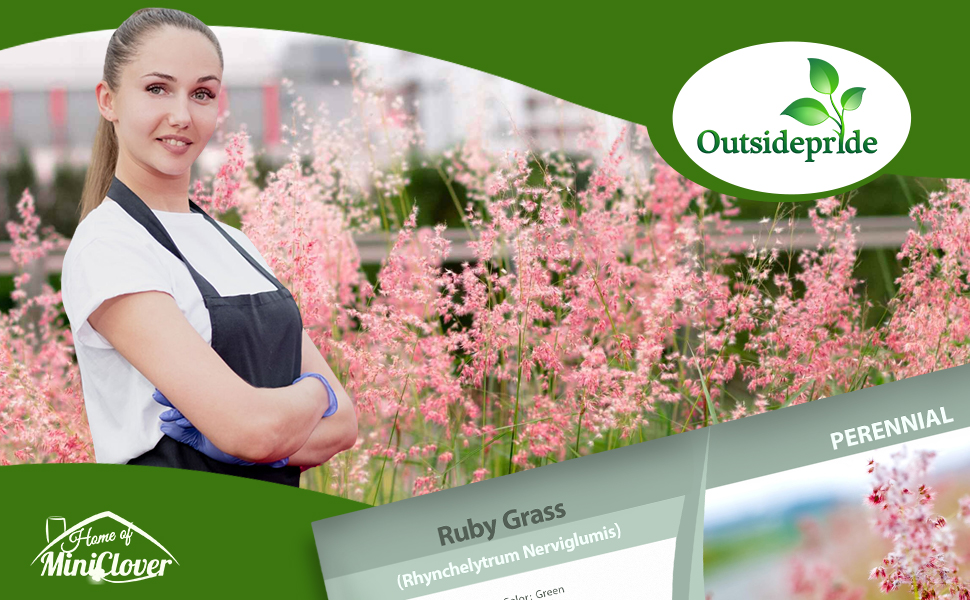
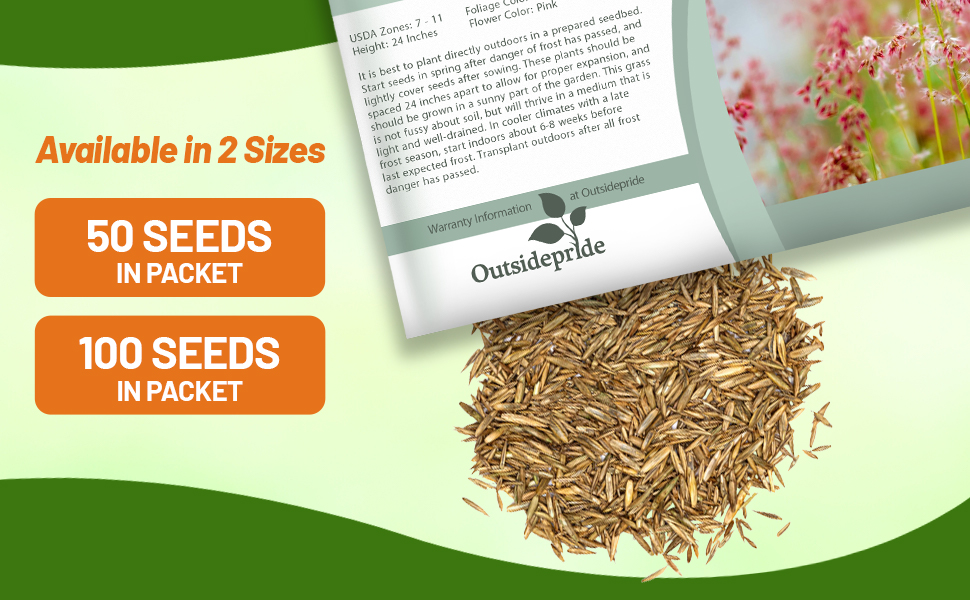
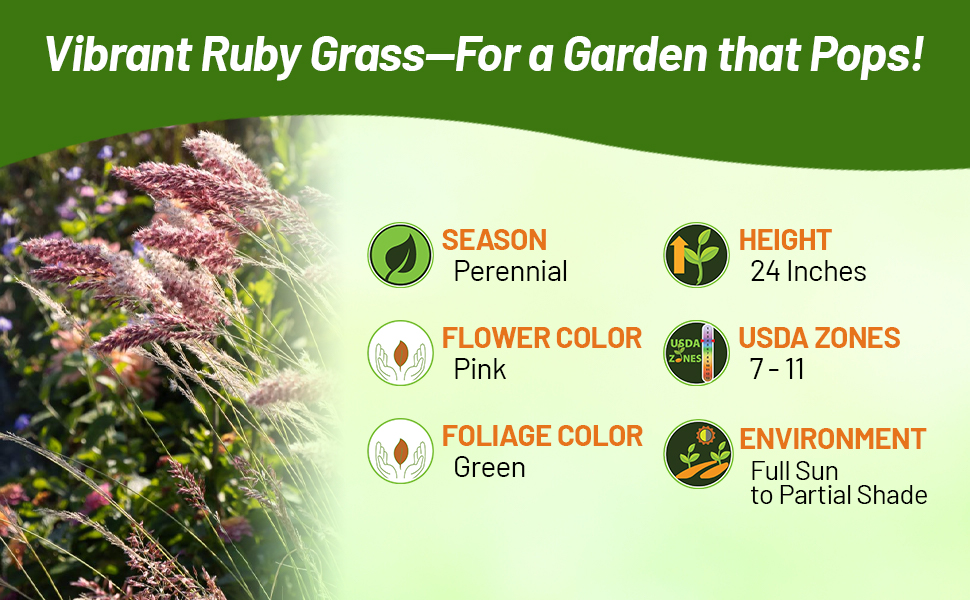
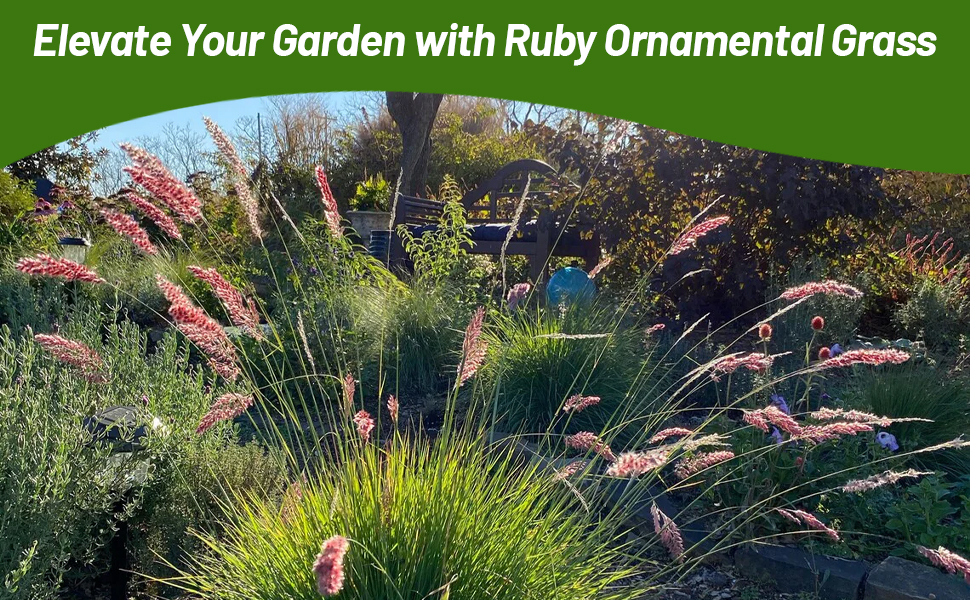
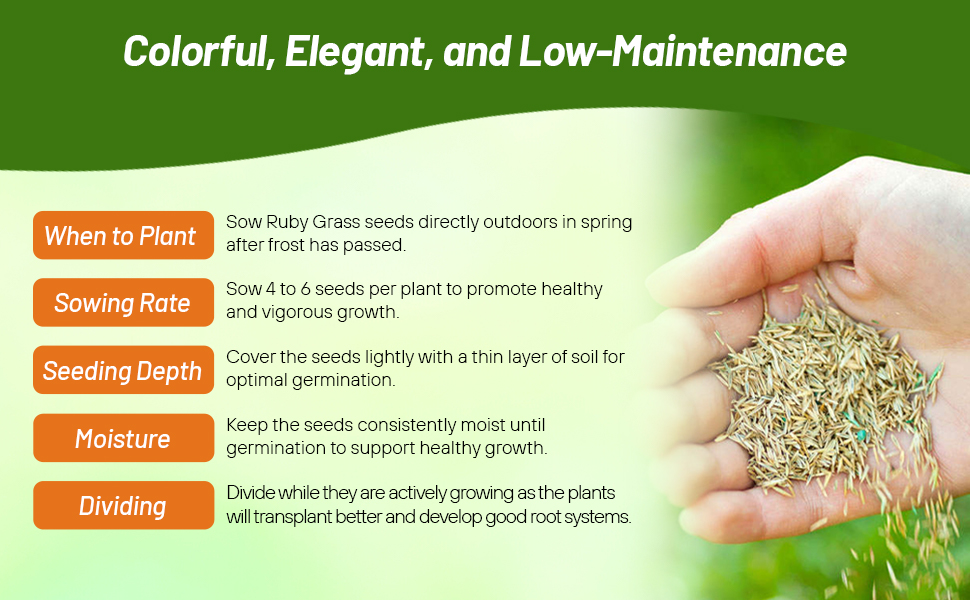
Ruby Grass (Rhynchelytrum nerviglumis) - If you like showing ornamental grasses, this one is a great addition for your landscape. Grown readily from Ruby Grass seeds, this spectacular ornamental grass is native to South Africa. Another common name is Bristle-Leaved Redtop Grass, and a synonymous botanical name is Melinis nerviglumis. Ruby Grass has blue-green foliage that turns brown in the fall. Throughout the summer, the grass blooms beautiful 3 - 4 inch ruby-pink blooms that sit 12 inches above the foliage. Melinis nerviglumis Ruby Grass is great for borders, in mixed perennial beds, as well as in mixed containers. It creates a breathtaking display as it moves in the summer breezes.
How To Grow Ruby Grass From Ornamental Grass Seed: It is best to plant Ruby Grass seeds directly outdoors in a prepared seedbed. Start the seeds in the spring once frost danger has passed and lightly cover the ornamental grass seeds after sowing. Ruby Grass plants should be spaced 24 inches apart and should be grown in a sunny part of the garden. The soil type is not overly important but the plant will thrive in a light and well-drained soil. For cooler climates with a late frost season, start the Ruby Grass seeds indoors about 6 - 8 weeks before the last frost is expected and transplant outdoors after frost danger has passed.
Ruby ornamental grass care includes protection from wind, moderate irrigation during the summer, and cutting the plant back onces it turns brown with the onset of cold weather. The plants can be divided in the spring before they are flowering, but it's best to divide while they are actively growing as the plants will transplant better and develop good root systems.
Common Questions
How is this plant typically used in the landscape?
Ruby grass is beautiful in beds and borders, rock gardens, or containers. Also great for cut gardens.
Can I use it in flower arrangements?
Yes, ruby grass works great for fresh or dried arrangements.
Planting Directions
TEMPERATURE
70F
AVERAGE GERM TIME
7 - 14 days
LIGHT REQUIRED
Yes
DEPTH
Cover the seeds with a thin layer of vermiculite
SOWING RATE
3 - 5 seeds per plant
MOISTURE
Keep soil moist until germination
PLANT SPACING
10 inches
TEMPERATURE
AVERAGE GERM TIME
LIGHT REQUIRED
DEPTH
SOWING RATE
MOISTURE
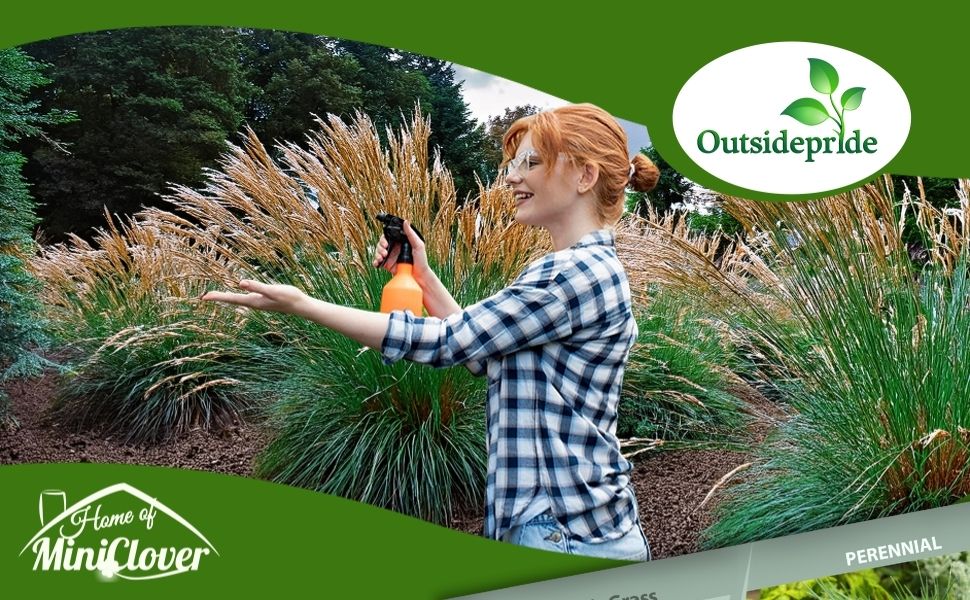
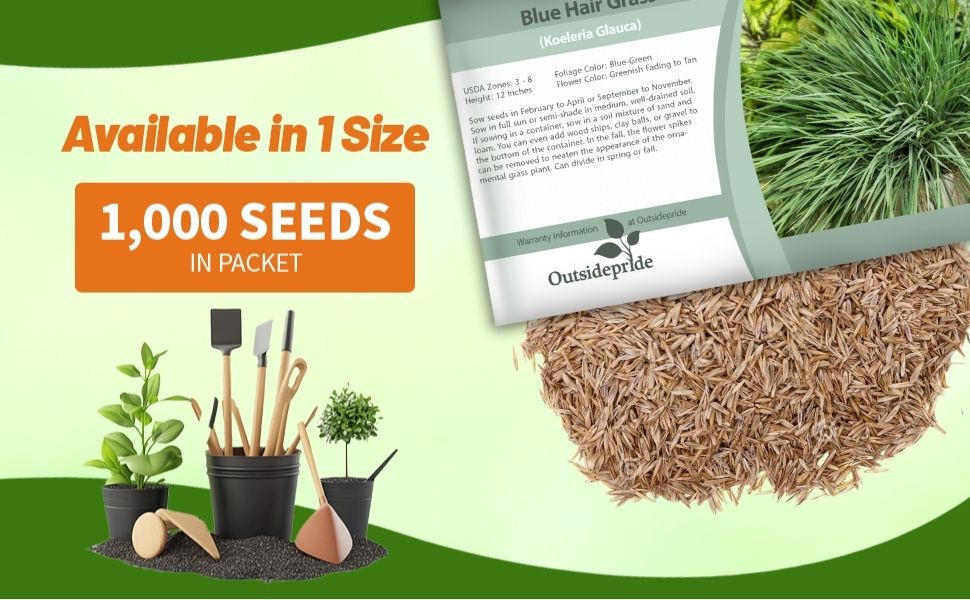
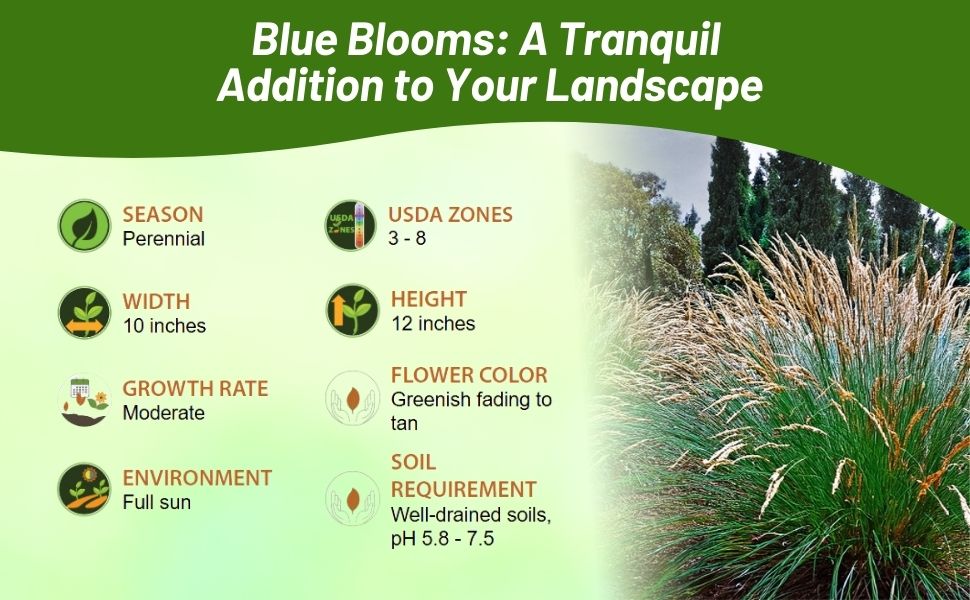

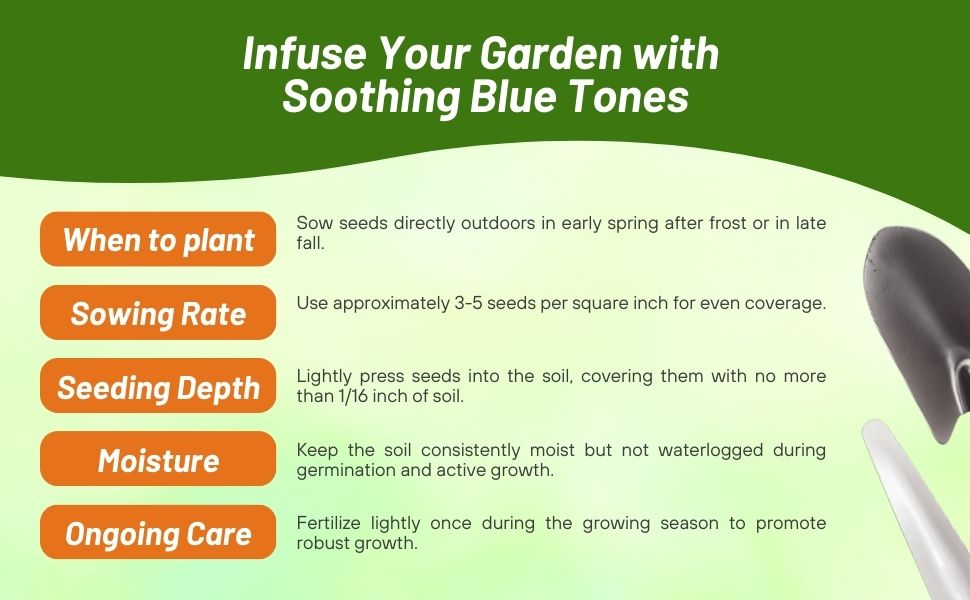
Blue Hair Grass (Koeleria glauca) - Drought tolerant Blue Hair grass seed produce both the foliage and flowers that are attractive and enhancing to the landscape, and it is one of the few low-growing ornamental grasses. This ornamental grass will only grow to 12 inch tall, producing dense tufts of blue-green leaves. Blue Hair grass is a well-behaved and non-spreading species that is suitable for sunny borders. It forms a low mound of very fine blue-green leaves with a hedgehog appearance. In the spring, flower panicles emerge that are glossy green, and they mature into tan seed heads by midsummer and last through late summer. The flowers preserve well and can be used in dried arrangements. The Blue Hair plant may remain evergreen in mild winter regions. Blue Hair Grass care includes a hard trimming in late winter down to 2 inches to remove dead foliage. In the fall, the flower spikes can be removed to neaten the appearnace of the ornamental grass plant. Can divide in spring or fall.
Blue Hair grass grows easily in average, dry to medium, well-drained soil in full sun. It performs the best in lean soils and will not do as well in rich, fertile soil. Koeleria glauca Blue Hair grass is drought tolerant, but it is not tolerant of heavy clay soils, wet soils and shade.
Common Questions
Do I need to prune my plants?
Yes, blue hair grass should be pruned back in late winter to make room for new growth come spring.
Can I use in my dried flower arrangements?
Yes, the flowers preserve well and can be used in dried flower arrangements if trimmed back in fall or winter.
Can I divide my plants?
Yes, blue hair grass can be divided in spring or fall.
Planting Directions
TEMPERATURE
65 - 70F
TEMPERATURE
AVERAGE GERM TIME
AVERAGE GERM TIME
10 - 90 days
LIGHT REQUIRED
Yes
DEPTH
Cover seeds lightly and keep it moist
SOWING RATE
5 - 7 seeds per plant
MOISTURE
Keep seeds moist until germination
PLANT SPACING
16 inches
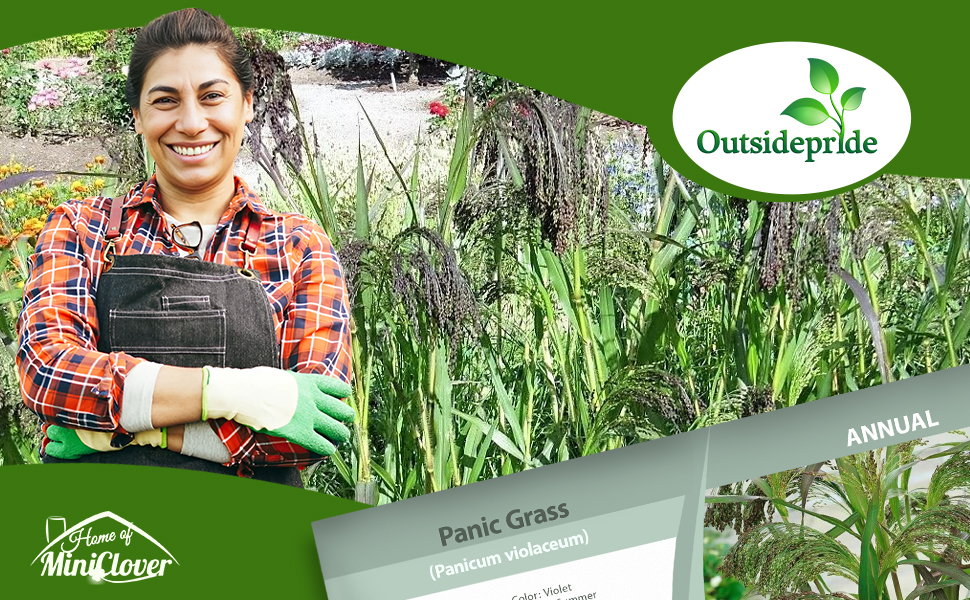
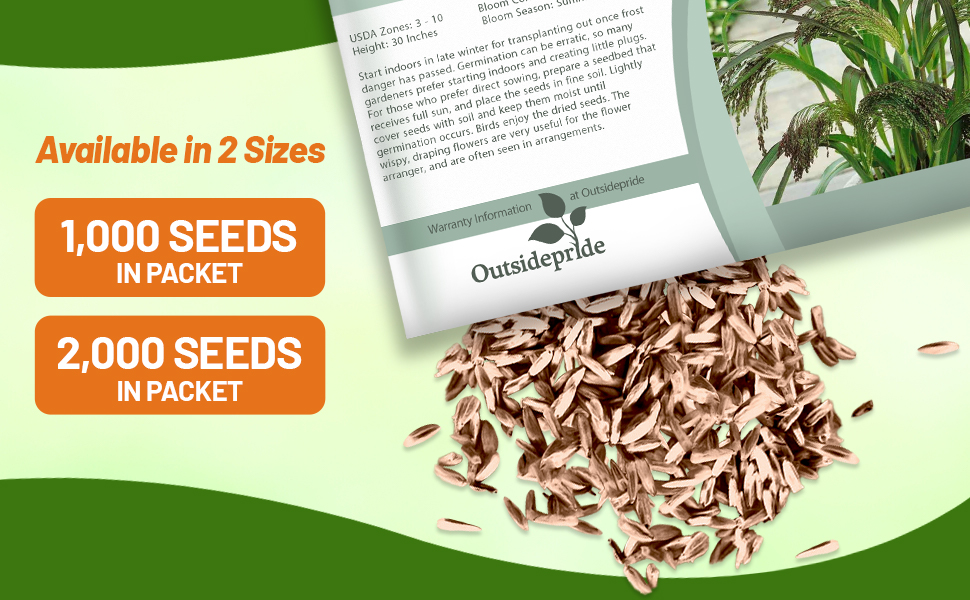
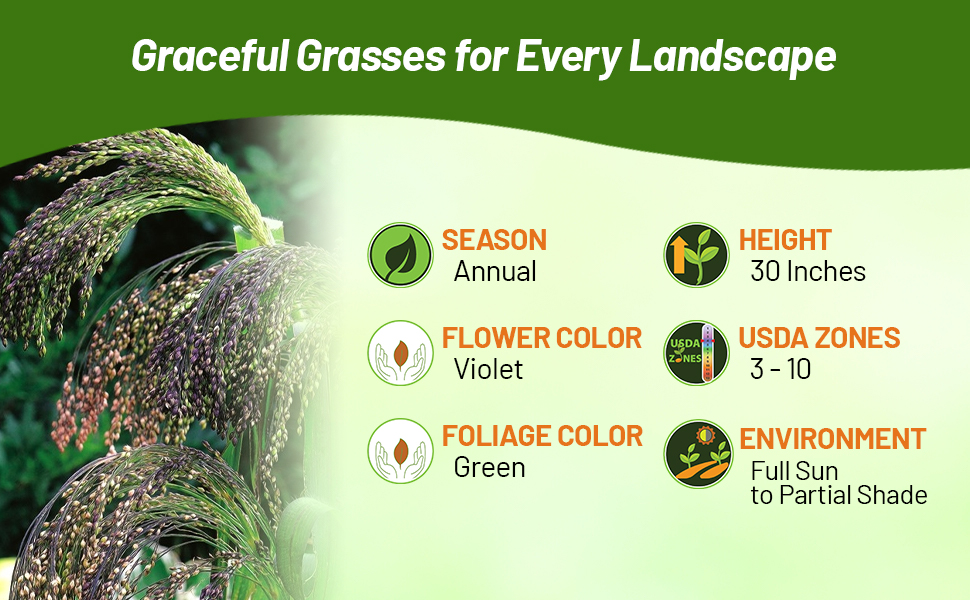
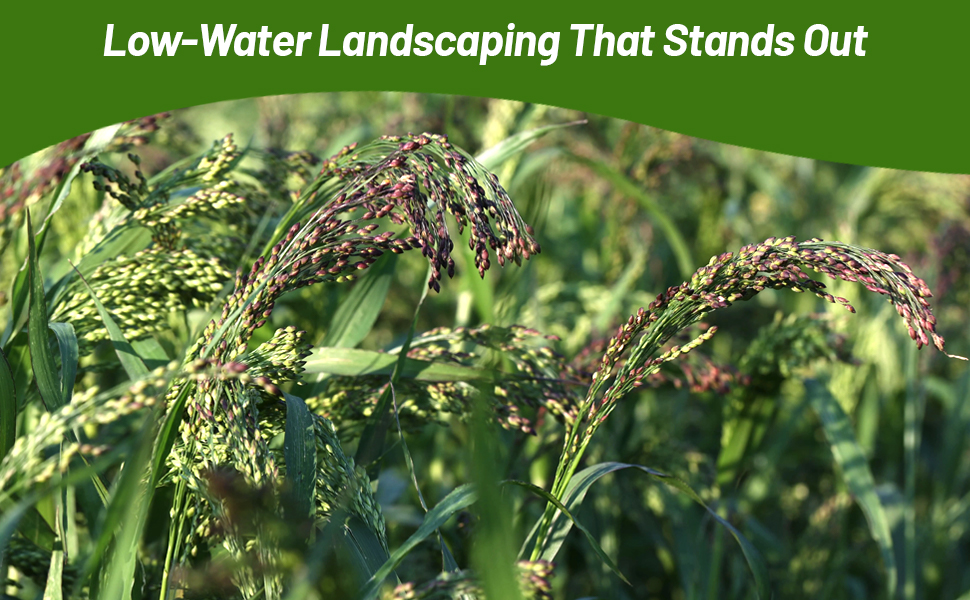
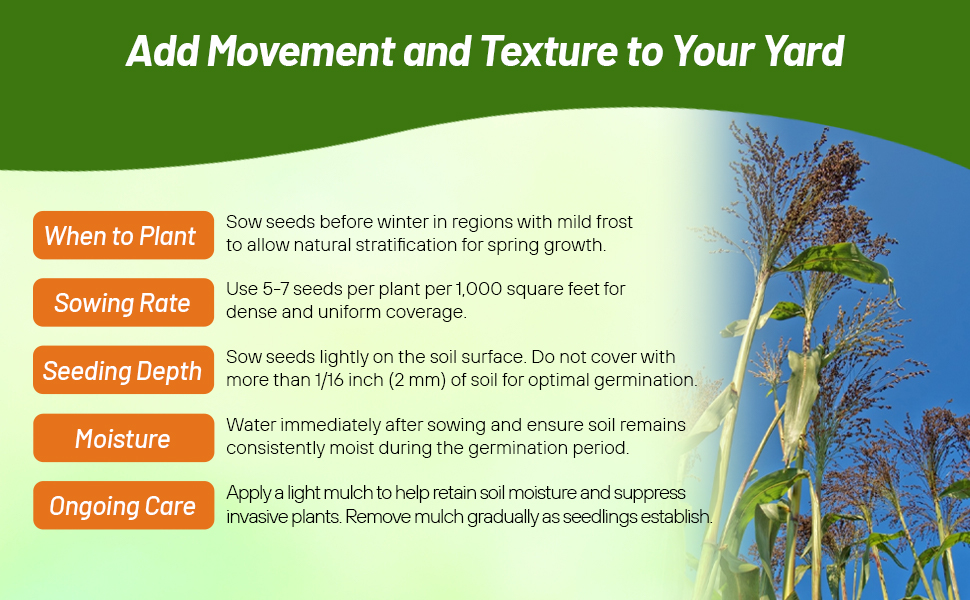
Panic Grass (Panicum violaceum) - If you enjoy adding ornamental grasses to your indoor arrangements, grow Panic Grass seeds, and add this lovely annual grass to your cutting garden collection. Sometimes referred to as Violet Panic Grass, this annual is very attractive with purplish-green, pendulous flower-heads. The wispy, draping flowers are very useful for the flower arranger, and are often seen in arrangements. It can also be grown directly outdoors and is a very drought tolerant plant for an xeriscape garden where water conservation is required.
Start Panicum violaceum seeds indoors in the late winter for transplanting out once frost danger has passed. The germination for Panic Grass seeds can be erratic, so many gardeners prefer starting the ornamental grass seeds indoors and creating little plugs. For those who prefer direct sowing, prepare a seedbed that receives full sun, and place the seeds in fine soil. Lightly cover the Violet Panic Grass seeds with soil and keep them moist until germination occurs. This ornamental grass is a millet, and birds enjoy the dried seeds.
Common Questions
Do I need to prune my panic grass?
Yes, cut back in late winter or early spring to maintain a tidy appearance.
Should I divide my plants?
Yes, plants do best when divided every 3 years or so to maintain vigor.
Planting Directions
TEMPERATURE
71F
AVERAGE GERM TIME
7 - 10 days
LIGHT REQUIRED
Yes
DEPTH
Surface sow seed
SOWING RATE
4 - 5 seeds per plant
MOISTURE
Keep seeds continually moist until germination
PLANT SPACING
12 inches
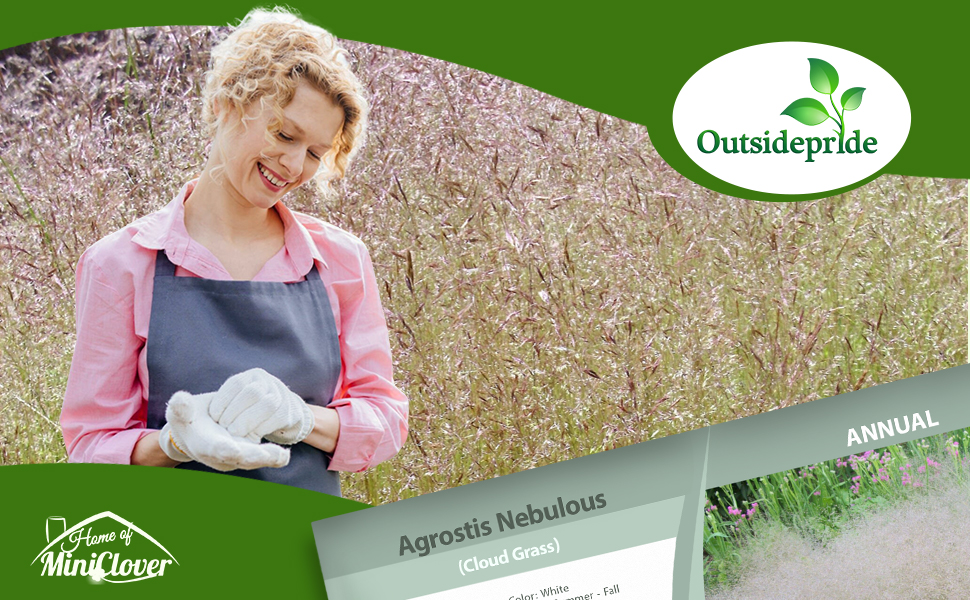

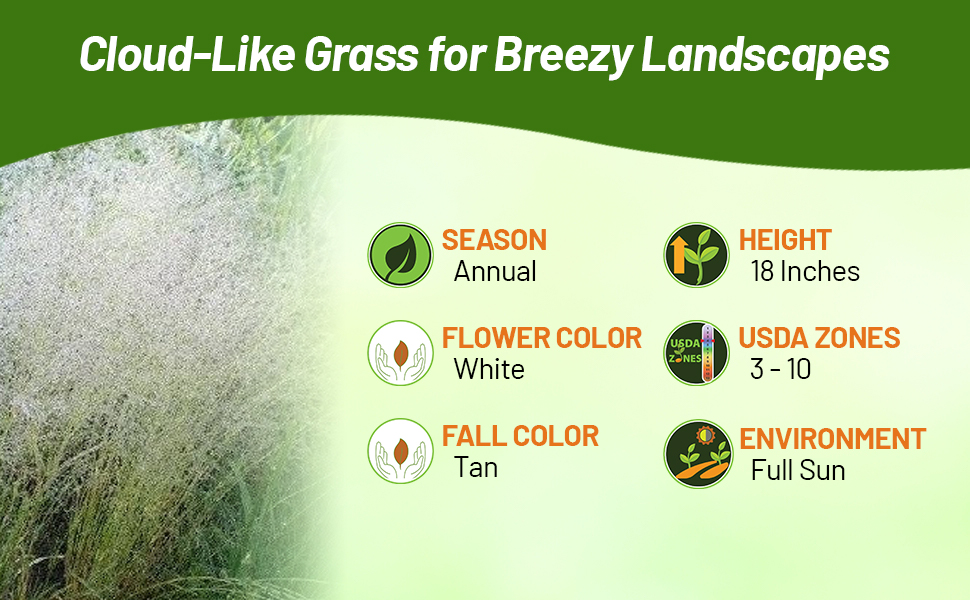
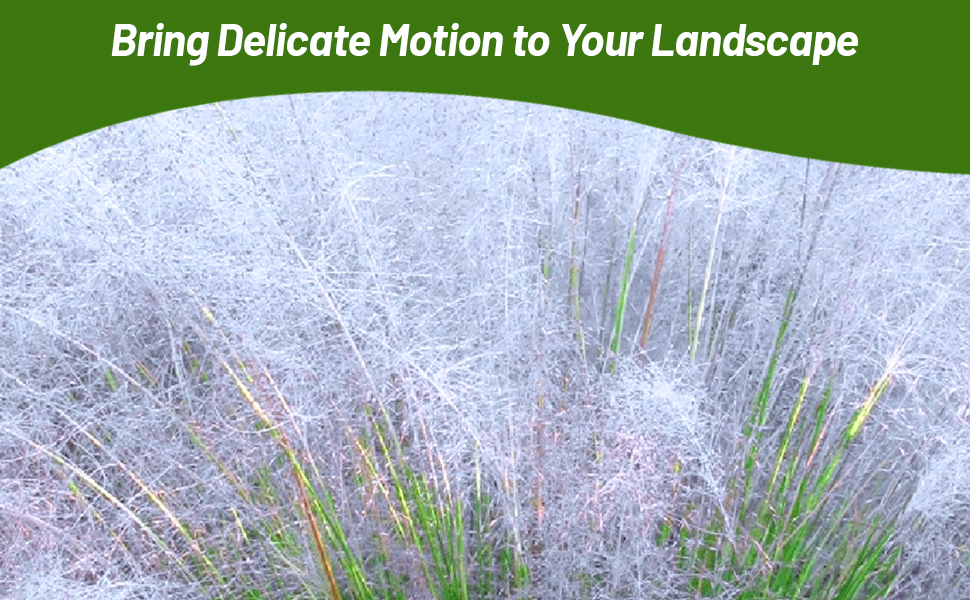
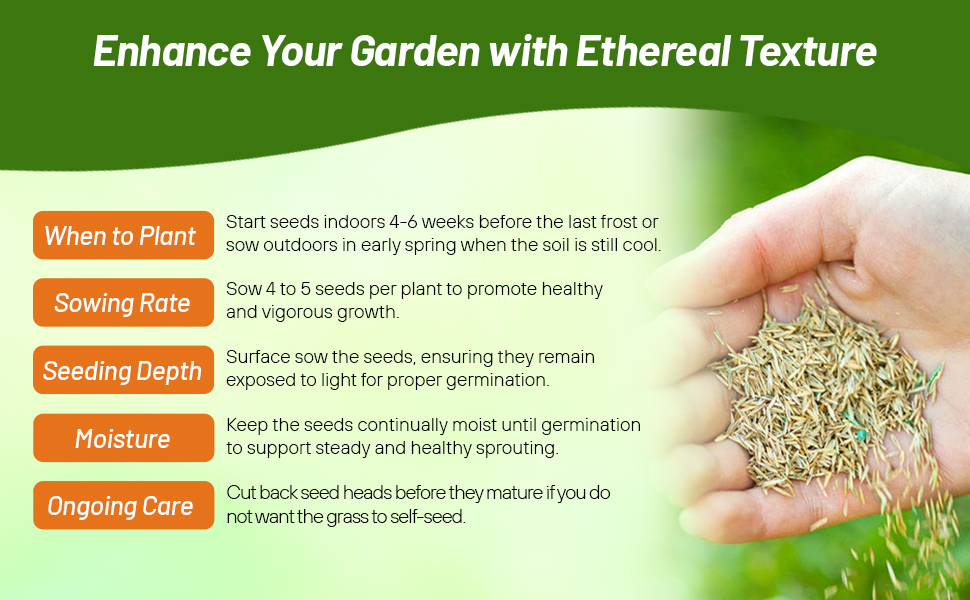
Cloud Grass (Agrostis nebulous) - Cloud Grass, a species of bentgrass, forms a hazy mist in late summer when its delicate, tiny flowers spread out in all directions. This plant is often cultivated for its light delicate heads that are used dried in floristry and is also drought tolerant.
The airy seed-heads resemble clouds or sea foam which make a great addition to any xeriscape flower garden. The ornamental grass has its best display when next to course textured plants or along fence lines. Agrostis nebulosa is very useful to fill in those difficult transitions in the garden. When Cloud Grass is fully mature, it reaches approximately18 inches tall & 12 inches wide blooming all summer long. Native to Portugal & Spain, but will grow in the U.S. in USDA Zones 3 - 10 as an annual ornamental grass. The flowers are great for fresh or dried bouquet and will turn tan as the seed-heads head in to Fall.
Common Questions
When do seedheads appear?
Typically cloud grass seed heads will appear Mid-summer.
Do I need to deadhead my plants?
Yes, to prevent the spread of these plants you will want to deadhead before they set seed.
What are some good places to use cloud grass in my landscape?
Cloud grass is great for borders, containers and in cut flower gardens.
Planting Directions
TEMPERATURE
70F
AVERAGE GERM TIME
14 - 28 days, soak seed overnight in warm water before planting
LIGHT REQUIRED
Yes
DEPTH
1/4 inch
SOWING RATE
2 - 3 seeds per plant
MOISTURE
Keep seeds moist until germination occurs
PLANT SPACING
10 - 12 inches
Job's Tears (Coix Lacryma-jobi) - For an interesting ornamental grass, try starting Cois seeds and enjoy this attractive grass that is known for its seeds. Commonly called Job's Tears grass, Coix is a perennial grass only in climate zones 9 and 10, and it is grown as an annual in the cooler zones. Ornamental grasses provide their own unique beauty to the landscape and Job's Tears is no exception with its slender, ribbon-like leaves and spikes of teardrop-like seeds. The plant is well known for the seeds that are natural beads and have been used for centuries to create jewelry and rosaries. Coix grass is native to Asia and is found along roadsides as well as cultivated for the grain that is edible and used in traditional Chinese herbal medicine. Grow these ornamental grass seeds and experience first hand the beauty and uniqueness of this Coix plant!































